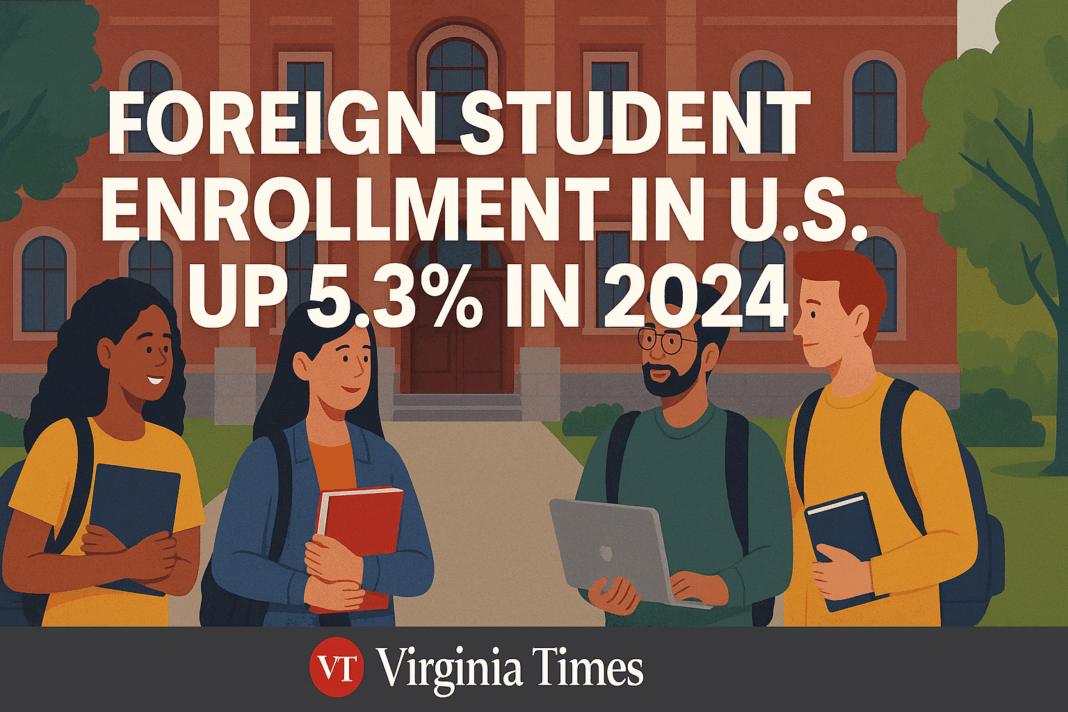- Foreign student enrollment in the U.S. hit 1.58 million in 2024, up 5.3% from 2023.
- India led with 422,335 students (up 11.8%), while China slightly declined with 329,541 students.
- California and New York hosted the most international students.
- Over 91% of students pursued higher education; bachelor’s and master’s degrees were most popular.
- 381,140 students had work authorization through OPT, STEM OPT, or CPT programs.
Lead
The U.S. Immigration and Customs Enforcement (ICE) released its 2024 Student and Exchange Visitor Program (SEVP) annual report, revealing a continued rise in international student numbers in the United States. The report, based on data from the Student and Exchange Visitor Information System (SEVIS), highlights demographic trends, program enrollments, and employment authorization among F-1 and M-1 visa holders.
Background
SEVIS is a web-based system maintained by the Department of Homeland Security (DHS) to monitor foreign students and exchange visitors pursuing academic and vocational programs in the U.S. The SEVP, a division of ICE, oversees school certification and student compliance with visa regulations. Each year, ICE publishes the SEVIS by the Numbers report to detail trends in the international student population.
By the Numbers
In 2024, SEVIS recorded 1,582,808 active F-1 and M-1 student records—an increase of 5.3% from 2023. These students represented more than 229 countries and territories, with Asia contributing the majority. India accounted for 422,335 records—an 11.8% surge—while China posted 329,541 records, a marginal decline of 0.25%.
California led the nation in international student enrollment with 237,763 students, followed by New York with 172,522. Approximately 91% of foreign students were enrolled in associate, bachelor’s, master’s, or doctoral programs, totaling over 1.43 million degrees in higher education—an increase of nearly 82,000 from 2023. Bachelor’s and master’s degrees remained the most sought-after, comprising 79% of all degrees pursued.
Work Authorization Trends
According to the 2024 report, 381,140 unique student records had work authorization through various practical training programs. These included:
- 194,554 approvals through Optional Practical Training (OPT),
- 95,384 through STEM OPT extensions, and
- 130,586 through Curricular Practical Training (CPT).
Note that the total includes unduplicated counts, recognizing that students may participate in more than one program annually.
Certified School Count Falls
The report noted a decline in the number of SEVP-certified schools, dropping from 7,683 in 2023 to 7,234 in 2024. These schools are certified to enroll foreign students and must comply with federal rules enforced by ICE and DHS.
Monitoring and Enforcement
ICE emphasized that it regularly monitors SEVIS data to detect possible national security threats or compliance violations. Suspicious cases are referred to ICE field offices. Additionally, SEVP evaluates student and institutional records for regulatory adherence.
Outlook
The release of the SEVP annual report offers vital insights into the evolving landscape of international education in the U.S. While enrollment numbers are rising, the decrease in certified schools and slight shifts in country demographics reflect ongoing regulatory scrutiny and shifting global dynamics. The full report, along with data from previous years, is available for public review on ICE’s official website.
Read More: 2024 SEVIS by the Numbers Report
A global media for the latest news, entertainment, music fashion, and more.















